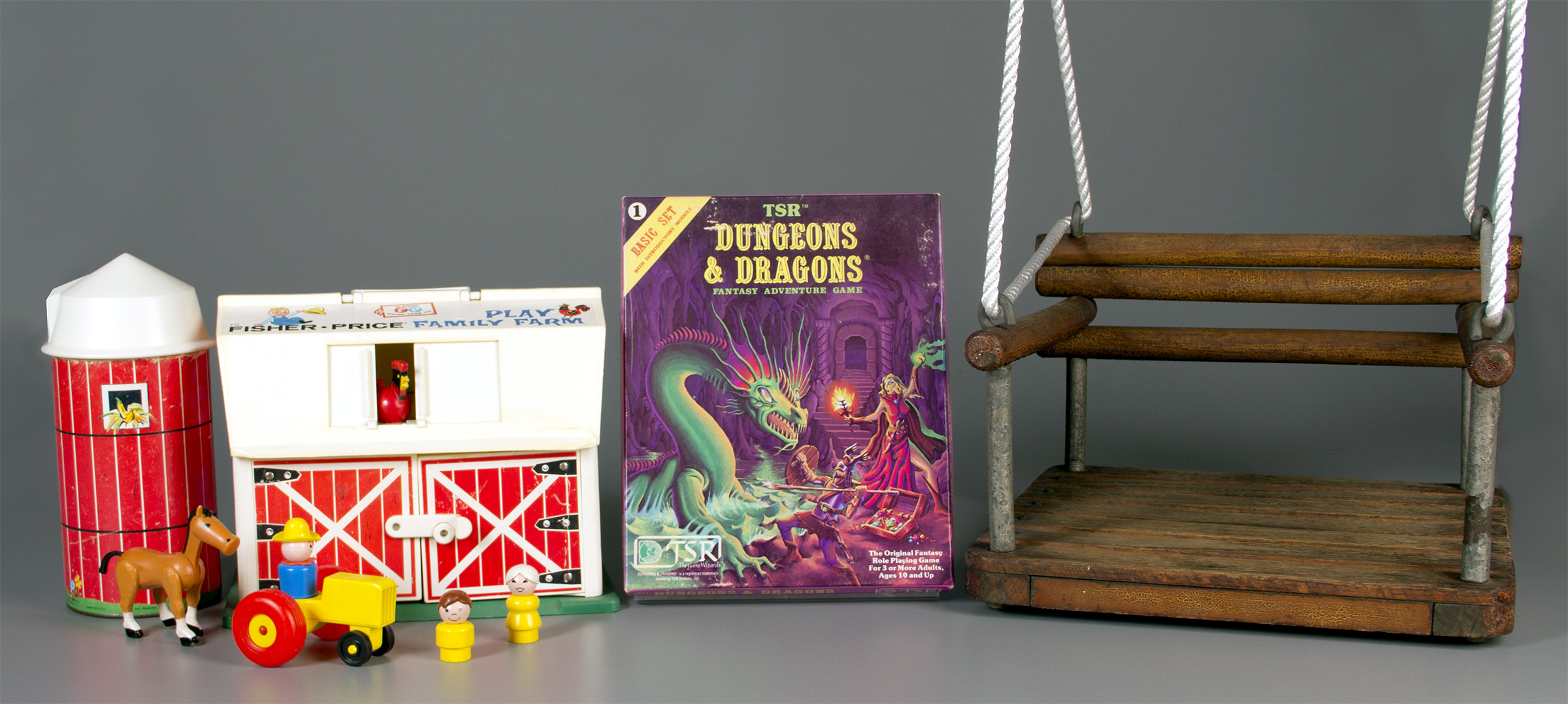
The swing, Dungeons & Dragons, and Fisher Price’s so-called “Little People” were inducted into the National Toy Hall of Fame Thursday morning at The Strong museum in Rochester, N.Y.
This year, the museum, which is dedicated to the history of toys, received more than 4,200 nominations for 780 different toys, which an internal committee whittled down to 12 finalists—including Care Bears, Clue, coloring books and Uno. The committee considered factors like name recognition and how long products have been on shelves. Finalists were then reviewed by a national advisory committee, who ranked their top three choices. Sixty-two toys have been inducted so far, and below is a brief history of the three that made the cut this year:
The swing
The museum claims humans are depicted on swings in “ancient cave drawings in Europe, carved figures from Crete, and ceramic vases from Greece.” As explained by Chris Bensch, The Strong’s vice president for collections, 18th-century artists depicted swings as an aristocratic pastime—as seen in Jean-Honoré Fragonard’s The Swing (1767)—before 19th-century industrialization sped up the production of ropes and metal chains, democratizing the idea. The playground movement of the early 20th century moved swings to public spaces where children living in tenements could socialize in a healthy way in unhealthy environments. During the post-war suburbanization of the mid-20th century, they became fixtures in suburban backyards.
Fisher Price’s “Little People”
When they came out in 1959, they were monochrome wooden bodies. One of the first sets was a Safety School Bus pull toy. “The baby boom is well under way [at the time],” says Bensch. “[There were] lots of kids out there and lots of families with enough disposable income to buy these sets, hitting [shelves] at a point where there was both a need and a market.”
They were deemed a choking hazard by many in the 1980s, so the company created slightly wider ones that became known as “Chunkys” or “Chunkies.”
Get your history fix in one place: sign up for the weekly TIME History newsletter
Dungeons & Dragons
The tabletop role-playing game that gave rise to World of Warcraft was created in 1974 by Gary Gygax and Dave Arneson during a time when TIME credited the game for creating “a new genre of entertainment” that “encouraged teamwork to succeed” and inspired TV shows, films, online imitators and even an audiobook narrated by Ice-T. As TIME described the rules of the original game a few years after it came out:
[A] small Wisconsin firm called TSR Hobbies Inc. sells a bewildering three-volume manual for a mind game called Dungeons & Dragons, whose object is to wrest treasure from the loathsome beings that guard it. The game involves a dungeon of six or more descending levels drawn on graph paper and includes such monsters as Balrogs, Purple Worms, Giant Leeches, Nixies, Griffons and Invisible Stalkers. Players take the characters of men, hobbits, elves or dwarfs and fight or hunt treasure according to elaborate rules: “The charisma score is usable to decide such things as whether a witch capturing a player will turn him into a swine or keep him enchanted as a lover.”
The magazine also argued its popularity represented an enthusiasm for increasingly complex mind games:
More than ever, the U.S. is a nation of game players. The most notable of the games being played are not mere social lubricants, and they are too difficult to be dismissed as mindless time fillers. There may be a parallel with the new enthusiasm for distance running, cross-country skiing and the other citizens’ sports that require enormous effort and seem absurd to unbelievers.
Some of the games now filtering into the general consciousness are distance runs indeed, taking anything from several hours to several months to play, and requiring formidable Sitzfleisch (German for sitting flesh). They leave the mind feeling exactly the way the body does after a ten-mile run, wrung out but exhilarated. Call this sort of game playing mental aerobics.
Read more: The 13 Most Influential Toys of All Time
More Must-Reads from TIME
- Cybersecurity Experts Are Sounding the Alarm on DOGE
- Meet the 2025 Women of the Year
- The Harsh Truth About Disability Inclusion
- Why Do More Young Adults Have Cancer?
- Colman Domingo Leads With Radical Love
- How to Get Better at Doing Things Alone
- Michelle Zauner Stares Down the Darkness
Write to Olivia B. Waxman at olivia.waxman@time.com